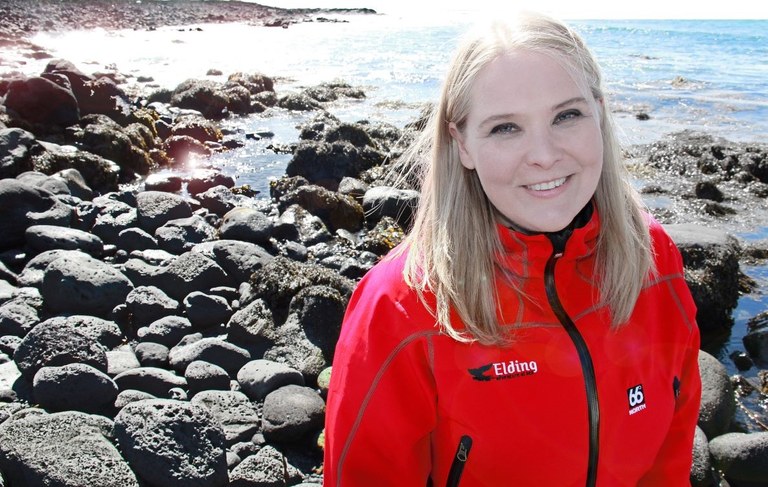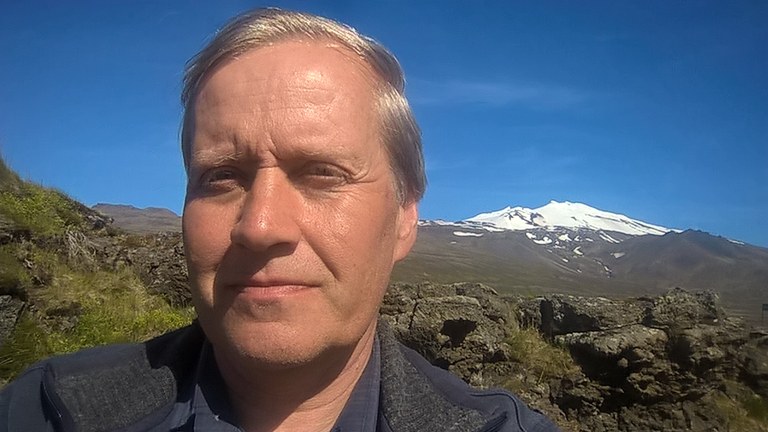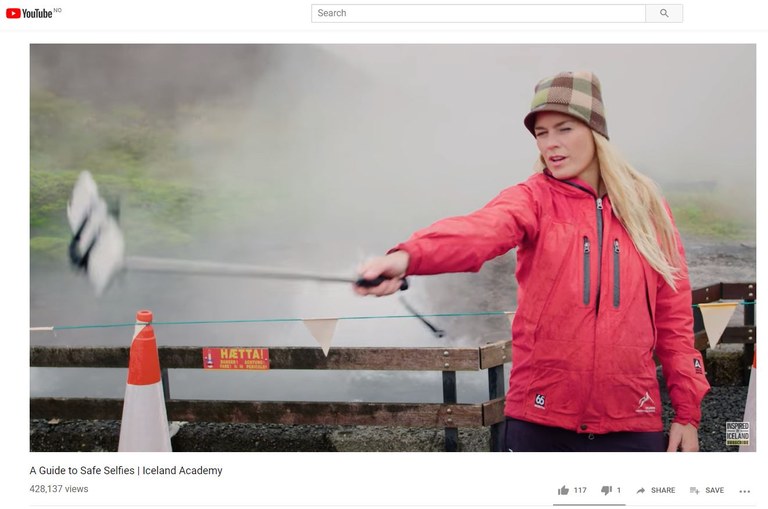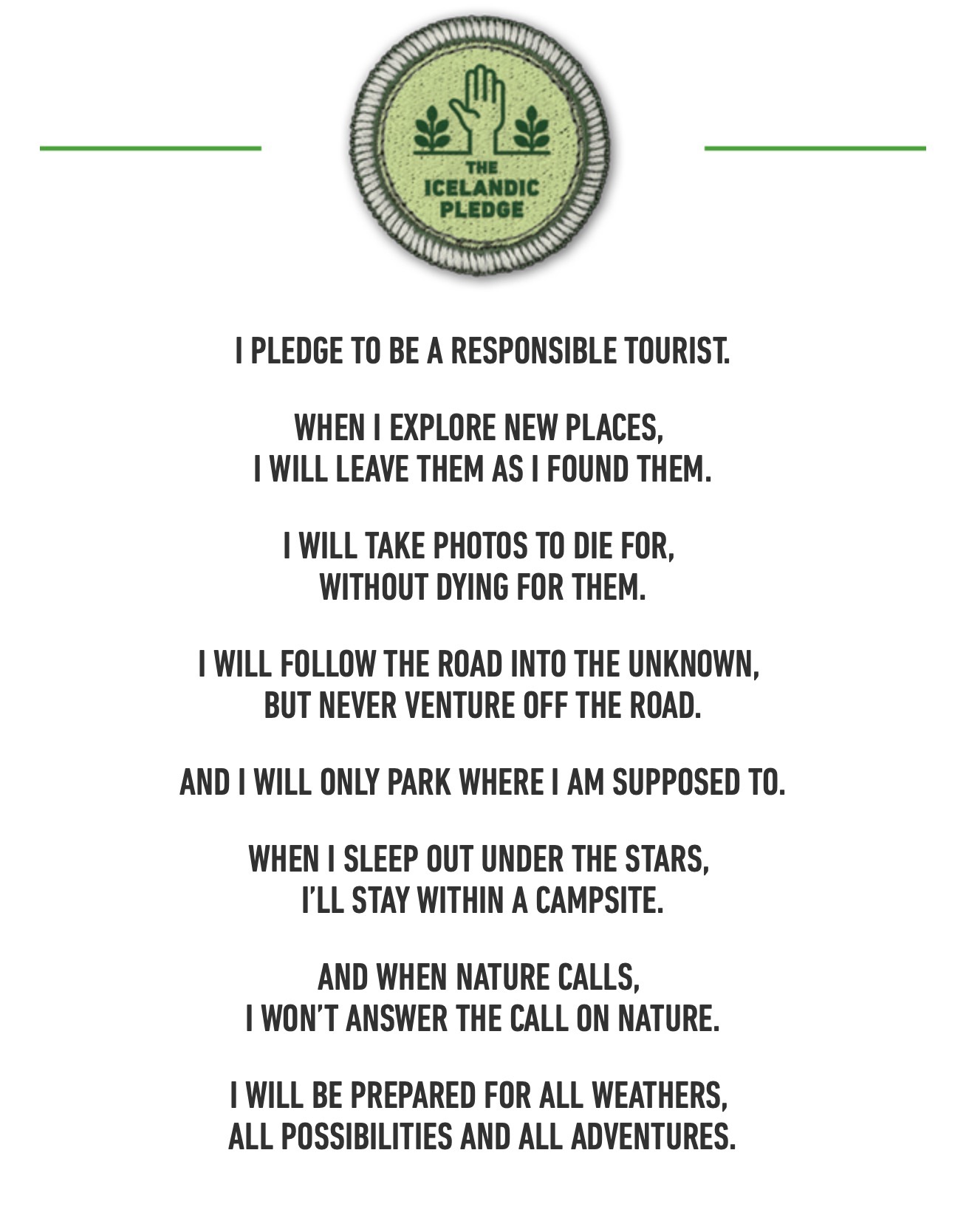Iceland’s tourism becomes a hot environmental topic
Tourists drowning at sea. Tourists dying in bus accidents. Tourists driving illegally off road and getting stuck in the middle of an active geothermal area. They do serious damage to nature just to post pictures of themselves and their tyre tracks on social media.
“I did not know,” they say.
These are some of the problems which now face Iceland’s tourism industry. Icelandic nature is under threat, and there might be problems ahead. Tourism has brought new challenges to Iceland.

Rannveig Grétarsdóttir
“When our guests do not respect nature, it’s a negative thing. But it can also be good when other guests see our reactions and realise that bad behaviour will not be tolerated,” says Rannveig Grétarsdóttir, CEO of the whale safari company Elding in Reykjavik.
Iceland’s tourism boom has slowed somewhat since the Icelandic airline WOW’s bankruptcy in the spring. Last year, 2.7 million people visited the island, but that figure is expected to fall this year – partly because of Icelandic currency fluctuations, but mainly because fewer foreign airlines now fly there.
The fall in tourism numbers allows Iceland to think, according to Rannveig Grétarsdóttir. She believes it is important to use this time to develop rules and introduce regulations around visits to Iceland’s many natural attractions.
No future vision
Jón Björnsson, Chief Park Ranger for the Snæfellsjökull national park, says Iceland has lacked the infrastructure needed to accommodate all the guests who have been coming in recent years. He says Iceland’s natural resources have been exploited in an irresponsible way; tourist companies have only been focusing on growth and have failed to think about sustainability and the impact of tourism on the local population.

Jón Björnsson, Chief Park Ranger for the Snæfellsjökull national park. Photo: private
“There is still no future vision within the tourism sector. There is still a lack of knowledge, and in certain areas the locals are about to run out of patience,” says Björnsson.
People in general do understand how important tourism is to Iceland’s economy and to individual households, however.
“Tourism is sometimes bad for the quality of life, but at the same time it does bring in money, and the Icelandic people understand this,” he continues.
The Icelandic Association for Search and Rescue, ICE-SAR, believes foreign guests’ behaviour has changed. Project manager Jónas Guðmundsson says the number of accidents involving tourists has fallen, with the exception of 2018. But Iceland must continue to develop its infrastructure in order to control where foreign visitors go.
“Most visitors behave in a nice and rational manner, except for a small number of social media celebrities,” he says.

As part of its drive to teach tourists to be more responsible, the tourism agency Inspired by Iceland has published a video showing how to take selfies. It has already had more than half a million views.
“We have not had good infrastructure up until now, and so it has been very important for tourism operators to warn tourists and to control the traffic to various places,” he says.
Damage compensation
The Icelandic government has been given a wake-up call. A few years ago there were not enough national park wardens, but this has changed. Tourism authorities are working hard to strengthen regulations for how to protect and control traffic to various areas and how to issue fines if rules are broken.
Nature has suffered, but now there is at least a tool available for stopping problems from arising. Police can now demand compensation for damage resulting from illegal environmental activities.
“I expect us to handle illegal environmental activities far more strictly in future. The government has now understood how important this is,” says Jón Björnsson.
Guðmundur Ingi Guðbrandsson, the Minister for the Environment, thinks Iceland is now in control of tourism’s impact on nature. He says Iceland is investing in viewing spots, toilets and ladders in order to control the traffic and the way visitors interact with nature. The country will now make plans for how tourism and nature will coexist without having a negative impact on the environment. Then there will be a debate on whether the number of visitors to certain areas should be limited.
The climate issue is extremely important to Iceland, while air traffic remains important to Iceland’s largest industry – the tourism sector. The Minister for the Environment believes that the number of foreign visitors might fall, but that they will stay for longer periods of time. Many airlines are also offering CO2 compensation schemes.
“Air traffic represents a large proportion of the total tourism CO2 footprint. You cannot take a train to Iceland, so we are in a special situation,” he explains.
Reorganising air traffic
The government has already developed a climate policy. Iceland will always be dependent on planes to link to the rest of the world, but the idea is to make greater use of video conferencing in order to reduce the number of flights for civil servants, until the aircraft industry starts using more environmentally friendly fuels.
“People in general should also think about how necessary it is to travel abroad as often as they do, or whether it might be possible to combine two journeys into one,” says Guðmundur Ingi.
Rannveig at Elding whale safari thinks Icelanders have not been treating nature all that well in the past, but that people are now ready to change the way they think and act. That is why they react so strongly when foreign guests fail to treat nature with respect. She believes that Iceland still has a long list of things that must be done in order to strengthen Iceland as a tourist destination.
“Icelanders are ready to introduce sustainability into the way we treat nature, but we must act faster,” says Rannveig Grétarsdóttir. She proposes to present to the Icelandic population an overview of what the tourism industry entails, to help Icelanders better understand what tourism is all about.
We will be focusing on nature
The tourism boom became a tsunami that engulfed Iceland. There was an uncontrolled flow of tourists, and the population was not prepared for so many guests. Icelanders started feeling the tourists were in their way. Now that tourism is abating, the government and the people can focus on sustainability, waste recycling and making sure the tourism industry uses renewable energy.
Rannveig Grétarsdóttir believes it is necessary to unite the people in the fight to save the environment, while also achieving a balanced understanding of the tourism industry’s needs.
“In the whale safari business, we always look at how we can develop for the future. We still have to use diesel-powered boats, at least for a while longer. In the meantime we can work on other ways of limiting our company’s impact on nature,” explains Rannveig.
“There are so many things we Icelanders can improve on and work with,” she says.

 Follow us on Facebook
Follow us on Facebook
